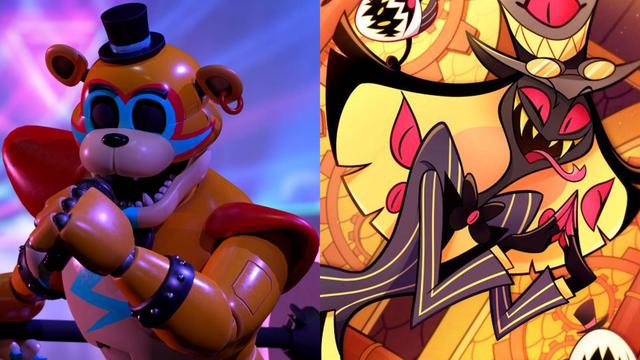If you click on a link and make a purchase we may receive a small commission. Read our editorial policy.
Can the new Transformers reboot break the Witwicky curse?
Less than meets the eye: Transformers and its problem with humans

Consider, if you will, the oddity that is the Whitwicky presence in Transformers as a franchise. They’ve been there since the very start: Buster — a teenager who’s just not into cars, much to the frustration of his mechanic father, Sparkplug — shows up not just in the original Marvel comics from 1984, but also ancillary material including kids’ storybooks of the era. Meanwhile, an entirely separate Whitwicky, Spike — whose dad was also called Sparkplug — is part of the original animated series, as well. And they’ve kept showing up ever since, to the point where the family is a recurring presence in the live-action movie series, and there’s even a Spike and a Sparkplug (or, at least, a 'Sparky') in the new Transformers comic book as part of the new Energon Universe. But… why?

As might be clear from the fact that there are Whitwickys (Whitwickies?) in both the original comic books and cartoons, even if their names don’t match, the human component of the Transformers saga was baked in from the very beginning. Jim Shooter, Marvel editor-in-chief at the time Transformers launched and someone who claims to have worked on the initial story bible uncredited, as previously written that Spike and Buster were, as many assumed, the same character with a name change from the former to the latter happening because, as he explains, “I was told [that] Spike was too aggressive and violent-sounding.”
Given that Spike was used in the animated series, and a Spike Whitwicky would later show up in Marvel’s comics as Buster’s older brother, clearly the decision didn’t last too long.
Shooter also notes that Sunbow, a production company that worked on the animated series and advised Hasbro in the early days of the property, “pretty much ignored or glossed over my human interest stuff anyway,” Sure enough, the Whitwicky presence in the animated series is very different from the comic book, with Sparkplug and Spike oil rig workers who meet the Transformers after the Decepticons attack the rig; in the comics, Sparkplug first discovers the existence of the robots in disguise after Buster brings back what he believes is a damaged car.to Sparkplug’s garage. Maybe the latter just wouldn’t make exciting enough television; it’s arguably that it wasn’t a particular thrill for the comic book readers of the time, either.

The presence of a human element in Transformers stories at all is one of those curious things that is understandable in theory, yet questionable in practice. The idea behind it is sound: how better to provide a way for readers — who are, as circumstance has it, human — to empathize with events about giant alien robots than put some actual people into it? However, the reality has rarely lived up to that thinking, with the various Whitwickys being little more than one-dimensional characters with a single triangle that think about while running away from the action.
This, incidentally, is where the new Transformers comic succeeds in a way other stories haven’t; there’s an interior and emotional life to Spike — a tragedy, if not two — that goes beyond the traditional 'he’s a boy and he wants a car and parents just don’t understand' positioning of the character; there’s something for audiences to latch onto, beyond 'oh, they’re tiny and in trouble when big robots fight next to them.'
And yet… boys who want cars and now get to hang out with giant robots is pretty much the definition of the Whitwicky agenda from everything from the original cartoon and comic through the Shia LeBeouf era of Transformers, Transformers: Revenge of the Fallen, and Transformers: Dark of the Moon. Given that humans aren’t really capable of playing at the same level as the (literally) big boys — short of a Head Masters-style glow up — they’re instead forced into, at best, a sidekick role if not a comedy relief role… which might explain why they repeatedly feel like irritants rather than entry-points.

After all, comedy relief (and, to some degree, sidekicks) are distractions from the main attraction, and who wants that? The Whitwickys — the humans in general, for the most part — get in the way of what fans really want to see in a Transformers story, which is 'giant robots that turn into stuff having a fight.' Just as it’s understandable that they’re perpetually reintroduced and reinvented for new generations of the franchise in order to provide perspective and empathy points for the audience, it’s just as understandable that they’re repeated phased out and dropped in favor of… well, the actual Transformers.
Perhaps the Energon Universe will break the curse, and find something for the humans to do and they’ll earn their keep in terms of our attention. (It’s worth noting that we don’t learn Spike or Sparky’s last name in the first issue; maybe they’re not even Witwickys this time around.) If not, then history has at least shown that, before too long, they’ll fade into the background and we’ll get to look at the bigger (robot) picture.
Hasbro’s VP of global publishing talks about the Energon Universe reboot, and promises, “we do’t have to force [the] story.”
Follow Popverse for upcoming event coverage and news
Find out how we conduct our review by reading our review policy
Let Popverse be your tour guide through the wilderness of pop culture
Sign in and let us help you find your new favorite thing.
















Comments
Want to join the discussion? Please activate your account first.
Visit Reedpop ID if you need to resend the confirmation email.